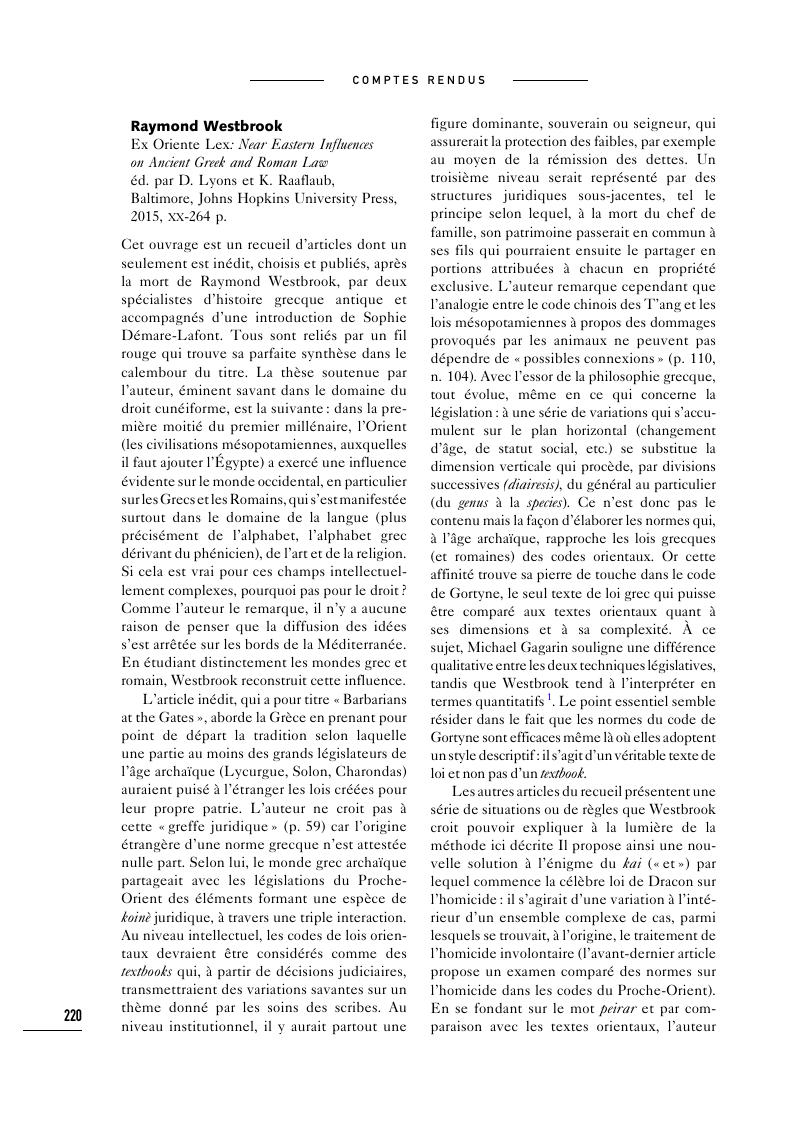No CrossRef data available.
Published online by Cambridge University Press: 24 May 2019

1 Michael Gagarin, « Inscribing Laws in Greece and the Near East » et Raymond Westbrook, « A Response to Michael Gagarin », in H.-A. Rupprecht (dir.), Symposion 2003. Vorträge zur griechischen und hellenistischen Rechtsgeschichte, Vienne, Verlag der Österreichischen Akademie der Wissenschaften, 2006, respectivement p. 9-20 et 21-25. Pour un panorama plus récent de la problématique, voir Bernard Legras (dir.), Transferts culturels et droits dans le monde grec et hellénistique, Paris, Publications de la Sorbonne, 2012.
2 Pour une critique approfondie et équilibrée de ce texte, voir Cantarella, Eva, « Réponse à Raymond Westbrook », in Wallace, R. W. et Gagarin, M. (dir.), Symposion 2001. Vorträge zur griechischen und hellenistischen Rechtsgeschichte, Vienne, Verlag der Österreichischen Akademie der Wissenschaften, 2005, p. 25-31.Google Scholar
3 Pour une réfutation approfondie de cette thèse, voir le compte rendu de Mario Talamanca dans Bullettino dell’Istituto di diritto romano, 92-93, 1989-1990, p. 858.
4 Sur Spensithios, voir Van Effenterre, Henri et Ruzé, Françoise, Nomima. Recueil d’inscriptions politiques et juridiques de l’archaïsme grec, vol. 1, no 22, Rome, École française de Rome, 1994Google Scholar ; sur Gneus Flavius, voir Cicéron, Ad Atticum, 6, 1, 8 et Pro Murena, 11, 25 ; Pline l’Ancien, Histoire naturelle, 33, (6), 17.